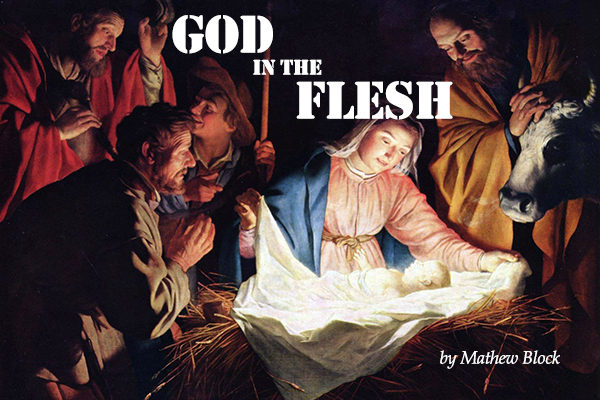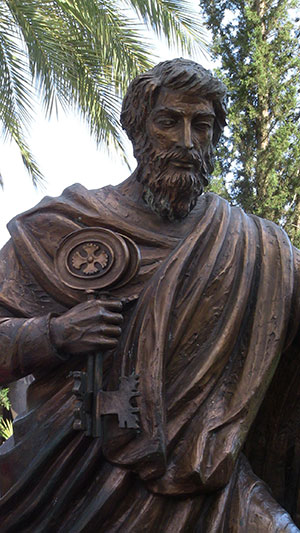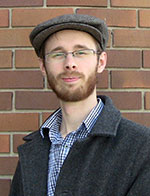
My Christmas article for this year is up at The Canadian Lutheran.
“When it comes to Christmas, the picture of the baby Jesus asleep in a manger is etched in our cultural consciousness. We imagine the little Lord Jesus laying down His sweet head in the hay, while stars twinkle away in the sky. How easy it is to forget that this little child is also, in a way beyond our understanding, the God who made the universe. He is the Word who spoke creation into existence (Genesis 1:3 ff; John 1:1-3). And He is the One who continues to sustain creation—the One who holds all things together and gives them being (Colossians 1:17; Acts 17:28).”
But, as I note, that good creation fell. So I ask the question:
“What sort of Saviour could heal and utterly ruined creation? What Saviour could restore the relationship between humanity and God? It could be no mere man for any human born would himself inherit the sinful nature of our first parents Adam and Eve. And yet it must be a man if justice were to be done; humanity had sinned and it was humanity that must pay the price for that sin.”
Thus begins my meditation on the mystery of the Incarnation—an event that brings forgiveness for sinners and restoration to a broken creation. Consequently, we celebrate not only Jesus’ birth at Christmas but our rebirth as well.
“As we celebrate the birth of Mary’s son Jesus we therefore also celebrate our adoption as children of God. For it was the one that made possible the other. ‘To all who received Him, He gave the right to become children of God,’ St. John tells us (John 1:12). All who are in Christ are made new. ‘Therefore if anyone is in Christ, he is a new creation,’ St. Paul explains. ‘The old has passed away; behold, the new has come’ (2 Corinthians 5:17).”
Read the whole thing in “God in the Flesh: The Meaning of Christmas.”
———————

In my column for the November/December issue of The Canadian Lutheran, I reflect at length on the meeting between Gabriel and Mary at the Annunciation, before pondering the Child she would bear. May it prove useful to your own thoughts this Christmas as we rejoice in the Incarnation.
A brief selection:
You can’t help but notice the contrast between the two speakers in this story: an angel of might and a humble young woman. I like the way the old Basque hymn imagines the meeting. It speaks of Gabriel coming down from heaven “his wings as drifted snow, his eyes as flame.” It’s a fearsome image, and contrasts beautifully with “gentle Mary,” who “meekly bowed her head.” It is a meeting of opposites. Might meets humility. Heaven meets earth.
What a striking picture of what would soon take place in Mary’s womb! Here One mightier than Gabriel, mightier than all the angels of heaven together is entering into the story. God is sending His own Son into the world. Christ is coming! But how He comes defies all expectations. He comes not in His power or His glory. No, He meekly bows His head. He humbles Himself, taking on the very form of a servant. Here is One humbler than Mary, taking on a servitude greater than even hers.
The article is called “Might meets humility.” Find the rest over at The Canadian Lutheran.
———————
Posted by Mathew Block under Articles, Main
1 Comment
 One of the things that struck me most during my recent trip with the Canadian Church Press to the Holy Land was how visiting this area affirms for us the doctrine of the Incarnation. I discussed that topic—the Incarnation and the Holy Land—recently in an interview on Worldwide KFUO radio for their World Lutheran News Digest program. The interview appeared in two five-minute segments this past Monday and Tuesday.
One of the things that struck me most during my recent trip with the Canadian Church Press to the Holy Land was how visiting this area affirms for us the doctrine of the Incarnation. I discussed that topic—the Incarnation and the Holy Land—recently in an interview on Worldwide KFUO radio for their World Lutheran News Digest program. The interview appeared in two five-minute segments this past Monday and Tuesday.
The first part of the interview introduces how the trip came about, and notes some of the difficulties about trying to see everything in just one week. One definitely needs to take more time than a week to get the most out of the trip! I also begin in this part of the broadcast to discuss the positive impact visiting the Holy Land has on one’s faith, by reminding us the stories of our faith are not myths or mere philosophical musings—they actually happened in real places you can visit.
The second interview features some of my reflections on Peter’s great confession and Jesus’ subsequent promise that “the gates of Hell will not prevail” against the Church. In it, I reflect how Caesarea Philippi (the area in which the great confession is made) was actually a Pagan centre in Jesus’ day, a place devoted to the god Pan—facts which help us understand the significance of Jesus making that promise in that place. I also discuss the two proposed sites for Jesus’ tomb in Jerusalem, focusing on the Gospel-focused ministry taking place at the Garden Tomb. (Listeners will also note I misspeak in this second interview when I refer to the “church of the Garden Tomb.” I should have said “site”; there is no church built in that area.)
Watch for my feature story on the Holy Land and Incarnation in the upcoming issue of The Canadian Lutheran. You can read more about the trip and my thoughts on the Holy Land in these earlier posts on CanadianLutheran.ca.
Lutherans among Canadian Church Press tour of Holy Land (a news-story)
Travels in the Holy Land (reflections made while still in Israel)
The tomb is empty (reflections made just after returning from Israel)
———————


 One of the things that struck me most during my recent trip with the Canadian Church Press to the Holy Land was how visiting this area affirms for us the doctrine of the Incarnation. I discussed that topic—the Incarnation and the Holy Land—recently in an interview on Worldwide KFUO radio for their World Lutheran News Digest program. The interview appeared in two five-minute segments this past
One of the things that struck me most during my recent trip with the Canadian Church Press to the Holy Land was how visiting this area affirms for us the doctrine of the Incarnation. I discussed that topic—the Incarnation and the Holy Land—recently in an interview on Worldwide KFUO radio for their World Lutheran News Digest program. The interview appeared in two five-minute segments this past 

